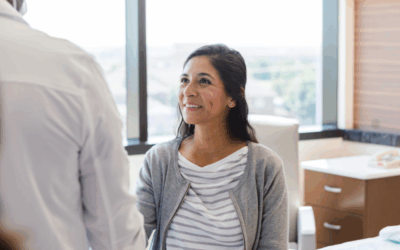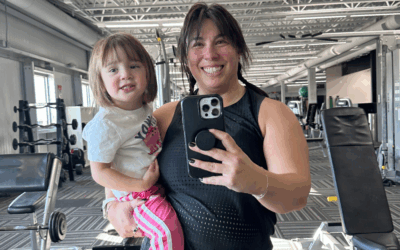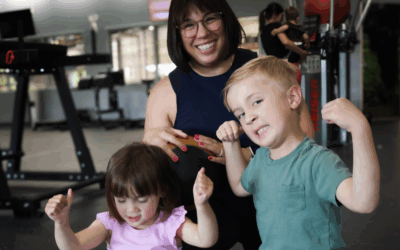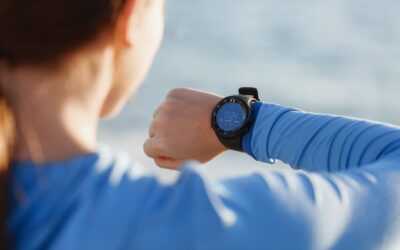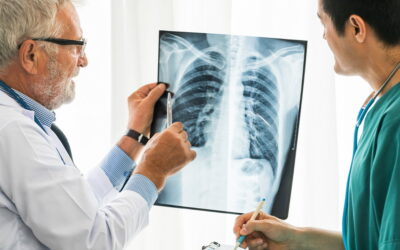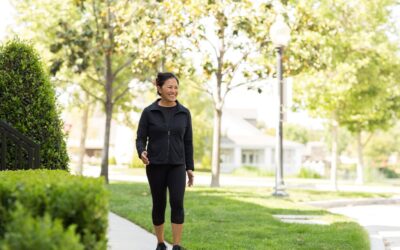Did you know that there’s only one cancer you can prevent with a screening? It’s colon/colorectal cancer and the screening is a colonoscopy. The Power of Colonoscopy Screening Unlike many tests that only detect problems after they appear, a colonoscopy can find – and...
Health & Wellness
We’ll help you find ways to improve your wellbeing in everything you do—from daily meals to sleep. Whether you’re looking for tips on managing stress, mental health or something else, our resources and health experts make sure you get the most out of life.
RSV: Know the Symptoms, Treatment and Ways to Prevent It
Every winter, we brace ourselves for the impact of cold and flu season. Clinics fill with children and infants with runny noses, coughs and congestion. Hospitals have children admitted for dehydration, vomiting or difficult breathing – among other problems. For some...
Is Tylenol Safe During Pregnancy?
If you’re pregnant and have reached for Tylenol (commonly known as acetaminophen) to ease a headache or lower a fever, you’re not alone. More than half of pregnant women use acetaminophen at some point during pregnancy. My wife, the mother of our nine children, used...
Pelvic Floor Therapy: The Best Thing I’ve Done For My Mom Bod
When I first shared about my pelvic floor journey, I was just beginning to understand what was actually going on with my body. I’m a mom of two littles, Max (5) and Zoey (2), and like so many women, I had accepted that pain and discomfort from the pelvic floor was...
AI is not the Magic Pill for Therapy
Artificial Intelligence (AI) appears to have been integrated into many aspects of everyday life. “Alexa” turning on your lights and music in your home and “Siri” making a telephone call for you or giving you driving directions are now common concepts for most...
Is It ADHD? How to Recognize Attention Deficit Hyperactivity Disorder in Your Child
Attention-deficit/hyperactivity disorder, also called ADHD, is a long-term condition that affects millions of children. It can continue into adulthood. ADHD includes a number of ongoing problems. These can include having a hard time paying attention, being hyperactive...
Little Ears, Big Lessons: How to Help Kids Build a Healthy Body Image
The other day, my five-year-old Max said, “I need some protein so I can have big muscles.” I couldn’t help but laugh because I knew exactly where he heard that from – me. As a personal trainer, I focus on hitting my daily protein goals to build muscle and support a...
Backpack Safety: It’s Time to Lighten the Load
Have you ever noticed when moving your child's backpack, that it feels like it contains 40 pounds of rocks? Maybe you've noticed your child: Struggling to put it on Bending forward while carrying it Complaining of tingling or numbness Complaining of a headache and...
Childbirth and Beyond: My Hardest, Most Beautiful Work
Being a mom to Ayan and Jordan is the best part of my life. Ayan is six and Jordan is about to turn four and they are truly the best thing since sliced bread. Motherhood fills me with a kind of joy I never knew existed. Cheerleader, coach, snack-getter, boo-boo fixer,...
My Inner Voice: The Power of Positive Self-Talk
I’ve never been one to ask myself the “why me” question when something doesn’t go as planned in my life. Thankfully, when times have been difficult I’ve been able to skip past this question and look for solutions by asking “what if”. Often, when life presents a...
How to Deal With Big Changes in Your Life
The one constant in life is change. One might get a new job, have a baby, graduate or move to a different city. Even though changes can be exciting, they can also be stressful. My patients frequently ask for coping strategies to deal with the big changes in life. Here...
Safe Sleep Practices for Newborns
Welcoming a baby into the world is a happy and exciting time! One of the most important aspects of caring for a baby is ensuring safe sleep. Infants typically sleep 16 to 18 hours a day, which is essential for their growth, development and overall health. Safe sleep...
Could an Ongoing Cough or Chest Cold Be Asthma?
I often see patients in my office who are dealing with a cough or chest cold that won’t go away or returns repeatedly. With these symptoms, I consider if my patient might have asthma.
Heart Rates: What’s Normal, What’s Not
As a cardiac electrophysiologist, my specialty is treating heart rhythm concerns. This could be a heart rate that is too slow, too fast or irregular. Let’s learn more about what your heart rate means and when to be concerned. What Does Your Heart Rate Measure and Why...
What Is Vertigo and How Is It Treated?
Imagine a sudden feeling of spinning when you first get out of bed that makes you feel like you’re on a carnival merry-go-round that won’t stop. You feel clammy, nauseous and out of control.
Making Waves: The Benefits of Aquatic Therapy for All Ages
Do you have aches and pains? Want to move easier? Interested in ways to improve your child’s strength and balance? Whatever goal you may have for yourself, your child or a family member, there are different ways aquatic therapy can help. What is Aquatic Therapy?...
10 Tips for Parenting with Love, Structure & Flexibility
Parenting is one of the most fulfilling yet demanding roles you can take on. Over the years, through my professional experience and my own journey as a parent, I’ve realized that perfection isn’t just unattainable—it can actually get in the way. Let me share a few...
Navigating Life with Migraines: My Journey and Insights
Have you ever felt a headache so overwhelming that it seemed to take over your entire day, leaving you desperate for relief? For me, migraines became an unwelcome companion during high school. Back then, I didn’t even know what to call them; I just knew that the...
Get the Protein You Need: How Much & What Kind Is Best for You
As a doctor, I get a lot of questions about how much protein we actually need. There is so much information available to us that finding the “right” answer can be hard. Protein is an important part of a well-balanced diet. However, getting the correct amount is just...
Holiday Season Self-Care for Moms
For my kids, it’s truly the most magical time of the year! For me though, as a mom, it’s also the season of heightened mental load and sensory overload. I feel the weight of planning, coordinating and making sure every moment is brimming with holiday cheer. I want my...
How to Lower Your Cholesterol
Do you have high cholesterol? Or have you been told to watch your cholesterol level? You might wonder what steps to take. Eat healthier, maybe more veggies? Exercise more? Limit calories? So many questions! I hope to help provide a little direction to help you. What...
Breast Cancer & Lymphedema
Lymphedema is a condition that occurs in one in five breast cancer patients. It might occur right after surgery or radiation therapy, or it might happen months or years later or not at all. If lymphedema is not treated, it can become debilitating and cause an...
Knee Pain & Surgery: How to Avoid It & When to Know It’s Time
If you’re experiencing knee pain, you might be wondering what you can do to avoid surgery and when surgery might be your best option. Here are answers to these common questions and information to help you determine next steps to resolve your knee pain. Knee Pain, Why?...
Acupuncture: Ancient Medicine with Modern Applications
My interest in acupuncture started while working alongside an acupuncturist in Anchorage, Alaska, at a large medical clinic. I was working as an X-ray technician, massage therapist and laboratory technician. I was also experiencing chronic neck pain due to a...
Building Better Bedtime Routines
Hi, I'm Ashley. And I'm Rachel. Welcome to our series, CapitalMOM Real Life Conversations. This week, we're going to be talking about bedtime routines—how they're different for every family, but ultimately how we use this time to connect with our children in different...
Preparing for a New Family Member
3,591,328—the number of babies born in the U.S. in 2023. Wow! That’s a lot of homes adding a new family member. And what about the 1 in 25 U.S. families who have at least one adopted child? Or the six million U.S. households that have more than three generations...
8 Tips to Avoid Injury: Insights from Sports Medicine Trainers
Whether you’re a weekend warrior, a recreational sports enthusiast or professional athlete, we can all use tips to avoid injury and stay healthy. We asked our athletic trainers to share some of their best tips.1. Listen to Your Body & Address Pain or Discomfort...
New Advances in Care: What Do I Need to Know If Someone I Love Is a Past or Current Smoker?
We all know it — smoking is not good for you. Yet for many, it is a reality of our daily lives. Let’s face it, it’s addictive and it’s often not easy to stop. And some people don’t want to quit. Given all of this, what’s a person to do? What steps can you take to make...
How to Avoid Burnout in Work & Life
Do you feel sluggish and exhausted? Can simple tasks seem overwhelming to complete? Have you found yourself so stressed out that you quickly become angry or frustrated? If you’ve noticed feeling this way, you might be experiencing burnout. Burnout can be difficult to...
Let’s Talk Osteoporosis: How to Keep Your Bones Strong
It might seem hard to believe but we reach our peak bone mass in our late 20s or early 30s. From there, men and women start to lose some amount of bone density throughout their lifetime. The loss in bone density causes an abnormal structure and ultimately weakens our...
Use Our Symptom Checker
Whether it’s a rash, your child’s ear pain or your aching back, our symptom checker can help determine what to do. Just answer a few questions about your symptoms and receive recommendations for care.
Find a Doctor
Find the right provider for you. Search by specialty, view provider videos and even schedule an appointment online. Life’s busy, we make finding a provider fast and easy to fit your schedule.
Stay Informed for Your Health
You and your family are unique. At Bryan Health, we have a variety of classes, events, podcasts and more for all stages of life.
To stay in the know, subscribe to our monthly For Your Health email!
Tune in to…Bryan Health Podcasts
Our 10-minute podcasts provide practical, useful advice for a lifetime of good health.
And they’re easy to listen to while you’re on the go, at work or at home. Listen to or download a free podcast today!
Register for the Bryan Baby App
Access pregnancy, childbirth and newborn care resources anytime, anywhere.
The Bryan Baby App includes the tools and support you need at every stage of your pregnancy journey and beyond.


